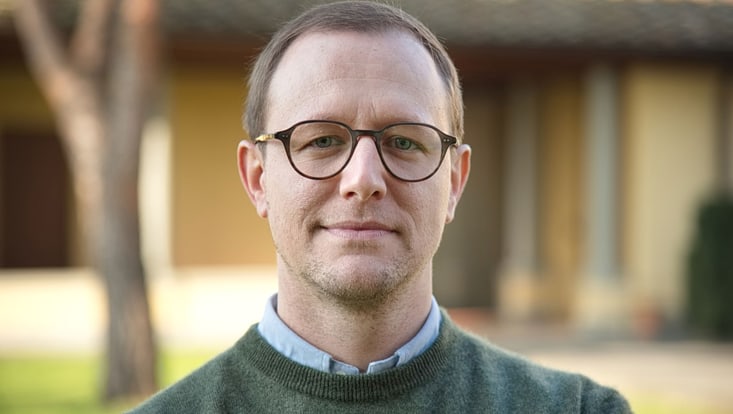Dr. Johannes Gebhardt

Curriculum
Johannes Gebhardt is Postdoctoral Researcher in the Department of Art History at the University of Leipzig, where he received his PhD in 2018. He is the author of the book ›Apparitio Sacri – Occultatio Operis. Zeigen und Verbergen von Kultbildern in Italien und Spanien (1600–1700)‹: the first systematic investigation into moveable altarpieces, highly popular early modern devices for the staging of cult images. In February 2024, he was One-Month-Research Awardee at Dumbarton Oaks (Byzantine Department) in Washington, D.C. In 2022/2023, he was Villa I Tatti/Museo Nacional del Prado Joint Fellow (Postdoc) in Florence and Madrid. Furthermore, Johannes Gebhardt has received fellowships from the Bibliotheca Hertziana – Max Planck Institute for Art History in Rome, and the Gerda Henkel Foundation in Düsseldorf. Johannes Gebhardt studied European Studies and Art History at the Universities in Passau, Toledo, and Leipzig. His current research focuses on early modern material culture from a transregional perspective (Europe – Viceroyalties of New Spain and Peru), with a particular emphasis on cult images, art theory, materiality and, most recently, on blood (current book project: ›Blood. Dimensions of Liminality in Early Modern Hispanic Art‹).
Publications (selection)
- Präsenzeffekte. Die Inszenierung der ›Sagrada Forma‹ im Real Monasterio de El Escorial, together with Sven Jakstat and Johanna Abel. Göttingen 2021 (= BildEvidenz).
- Apparitio Sacri – Occultatio Operis. Zeigen und Verbergen von Kultbildern in Italien und Spanien (1600–1700). Munich 2020 (= Römische Studien der Bibliotheca Hertziana, vol. 48).
- Paragone. Leonardo in Comparison (Conference Proceedings, 2019), ed. Johannes Gebhardt and Frank Zöllner. Petersberg 2021 (= Studien zur internationalen Architektur- und Kunstgeschichte, vol. 188).
- Sassoferrato’s ›Mater Salvatoris‹ in SS. Trinità dei Pellegrini e Convalescenti, Rome. In: The Burlington Magazine 160, 2018, pp. 946–949.
- The Crucifix in the Santuario Santissimo Crocifisso alla Collegiata in Monreale: The Unveiling of a Cult Image in Post-Tridentine Sicily. In: Re-thinking, Re-making, Re-living Christian Origins, ed. Ivan Foletti et al. Rome 2018 (= Études lausannoises d’histoire de l’art, vol. 27), pp. 147–164.
Research project: Blood as Material – Dimensions of Liminality in Early Modern Visual Culture
Buddhist monks producing images of the Buddha and transcribing sutras in their own blood; African enslaved individuals, forcibly displaced through the transatlantic slave trade, creating drawings with their own blood; those condemned as heretics by the Inquisition, painting fresco cycles on the walls of Spanish inquisitorial prisons, incorporating their own blood: these instances reveal the persistent presence of blood as a material within the visual culture of the early modern period. No other bodily fluid embodies such a complex and multifaceted symbolism, shifting across diverse sociocultural contexts between the poles of life-giving power and fatal depletion, hope and despair, salvation and damnation, and between notions of earthly existence and transcendent manifestations of the divine. In my project, I aim to explore the complex role of blood within artistic production processes, analyzing its relation to European and non-European models of power and to the divergent, non-quantifiable forces of the numinous in religious contexts. I theorize blood as a ›threshold substance‹, functioning as a medium of liminal negotiation, through which I examine blood artifacts across diverse cultural contexts, analyzing their specific materiality, biography, and ›agency‹, as well as the symbolic gradations expressed through the fluid itself.
